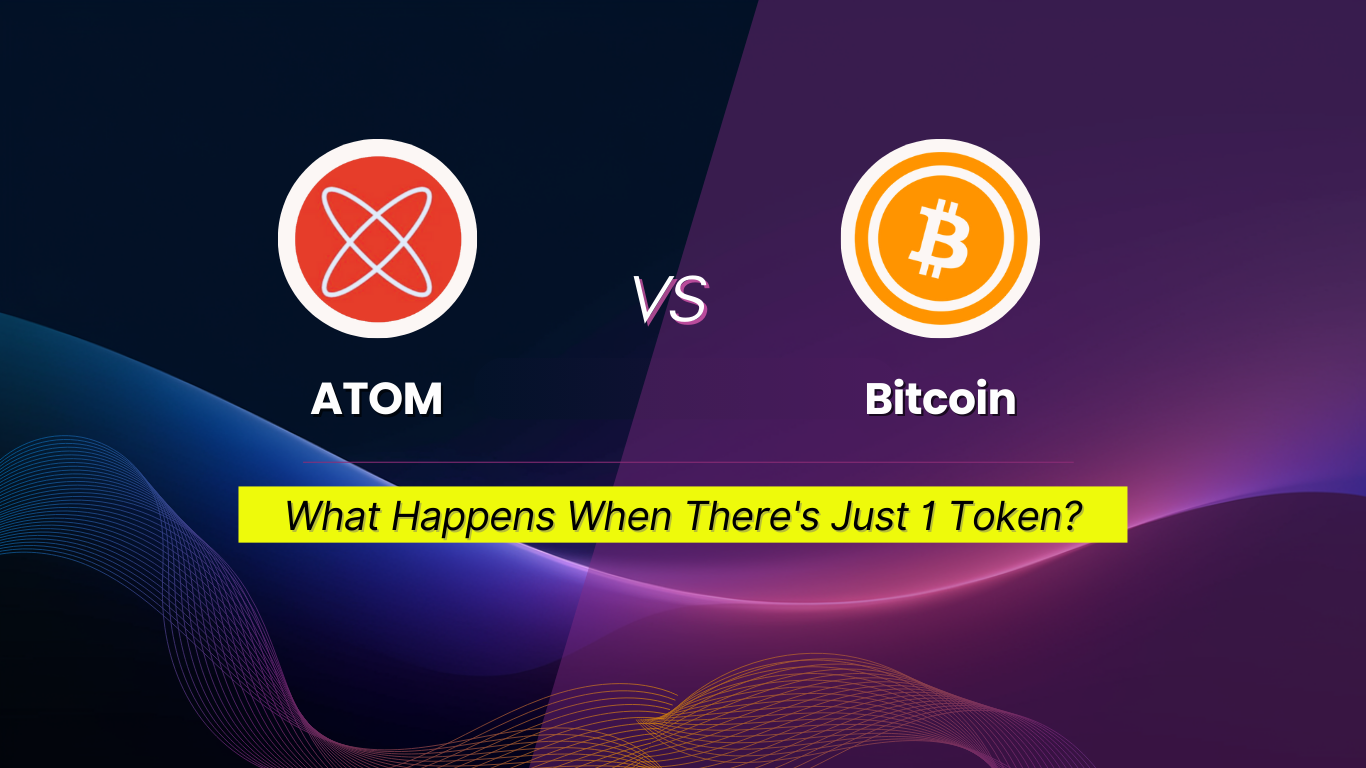From the Blogs
Learn how to grow your business with our expert advice.

ATOM vs. Bitcoin: What Happens When There's Just 1 Token?
Introduction: The Battle of Scarcity in Crypto
Scarcity has always been the backbone of value creation in financial markets. The rarer an asset, the more desirable it becomes. This is why Bitcoin’s 21 million supply cap became one of the most significant innovations in digital finance.
But what if a cryptocurrency took scarcity to the extreme—so extreme that only one token exists?
This is where ATOM enters the scene. While Bitcoin is considered scarce, ATOM is absolute scarcity in its purest form. With a total supply of just 1, ATOM is an experiment in how markets perceive and value digital exclusivity.
In this article, we’ll explore a Bitcoin vs ATOM crypto comparison, analyzing their supply models, scarcity effects, investment potential, and market demand.
Bitcoin: The Pioneer of Digital Scarcity
Bitcoin revolutionized the financial world by introducing a decentralized, finite supply asset. Its core value proposition comes from its hard cap of 21 million BTC, which prevents inflation and mimics the scarcity principles of gold.
How Bitcoin’s Scarcity Works
- Limited Supply – There will never be more than 21 million BTC in existence.
- Mining Rewards & Halving Cycles – New BTC enters circulation through mining, but rewards halve every four years, reducing new supply.
- Lost BTC – Millions of BTC are lost forever due to lost wallets, making actual circulating supply even lower.
This scarcity model gives Bitcoin deflationary characteristics, making it an attractive store of value. Over time, as demand increases, the limited supply causes upward pressure on price, leading many to call Bitcoin “digital gold.”
But as scarce as Bitcoin is, 21 million is still a large number compared to just 1 ATOM.
ATOM: The Experiment in Absolute Scarcity
While Bitcoin’s 21 million cap made it unique, ATOM takes it to the extreme by existing as a single unit on XRP Ledger (XRPL).
How ATOM’s Scarcity Model Works
- Total Supply: 1 ATOM – No additional ATOM can ever be created.
- Fractional Ownership – ATOM is divisible into 0.000001 units, called “sub-atomic” units, allowing multiple holders to own pieces of it.
- Fixed Forever – There are no mining rewards, no burns, and no supply inflation—ATOM will always remain a single entity.
This makes ATOM the most exclusive digital asset ever created. Even Bitcoin, with its 21 million supply, cannot match ATOM’s level of rarity.
Bitcoin vs ATOM Crypto Comparison: The Key Differences
Investment Perspective: How Does Value Accumulate?
Bitcoin: A Store of Value Model
Bitcoin has positioned itself as digital gold, where scarcity limits inflation and preserves value. Investors hold BTC because:
- Its fixed supply makes it deflationary over time.
- Institutional adoption continues to grow.
- It has a proven track record over more than a decade.
Bitcoin’s strength is its predictable supply model—as fewer BTC are available, price appreciation is expected.
ATOM: A Market-Driven Scarcity Play
ATOM is entirely market-driven. There is no inflation, mining, or controlled release of new supply. Instead, its value depends on how much people are willing to pay for extreme exclusivity.
- The market fully determines ATOM’s price—there is no controlled issuance.
- Owning even a fraction of ATOM is highly exclusive, making it attractive to collectors.
- It represents an experiment in pure digital rarity, which may create long-term speculative demand.
While Bitcoin follows a predictable adoption curve, ATOM’s valuation is more experimental—it could either become one of the most valuable digital assets or remain a niche collector’s item.
How Scarcity Impacts Market Demand
Both Bitcoin and ATOM use scarcity as their primary value driver, but how they do so is vastly different.
1. Bitcoin’s Growing Adoption and Demand
Bitcoin has gained mainstream recognition as:
- A hedge against inflation.
- A decentralized alternative to fiat money.
- A widely traded and held investment asset.
Bitcoin’s liquidity and accessibility make it a strong asset for both retail and institutional investors.
2. ATOM’s Exclusivity and Collector’s Appeal
ATOM, on the other hand, functions more like a rare art piece or luxury asset.
- Only a handful of people can own meaningful fractions.
- Every trade in ATOM is an experiment in market psychology.
- Ultra-wealthy investors or crypto collectors may eventually seek ownership of ATOM just for the exclusivity it offers.
While Bitcoin serves as a universal financial asset, ATOM represents a social and financial experiment in digital rarity.
Trading ATOM: Where and How to Get It
Since ATOM operates on XRP Ledger (XRPL), it benefits from fast, cheap transactions. If you’re looking to own a piece of this rare digital asset, you can trade ATOM on:
- First Ledger – Trade ATOM Here
- Sologenic – ATOM on Sologenic
- XMagnetic – Trade ATOM on XMagnetic
With its fractional ownership model, ATOM allows people to buy and hold small pieces of the rarest asset on XRPL.
Conclusion: Can ATOM Challenge Bitcoin’s Scarcity Model?
Bitcoin has proven that scarcity creates value, but ATOM is pushing that idea to its extreme.
While Bitcoin remains the leader in decentralized finance and store of value, ATOM is a unique experiment testing how markets react to absolute digital exclusivity.
- Bitcoin is scarce, but widely available.
- ATOM is hyper-rare, with only one in existence.
- Bitcoin is a hedge against inflation.
- ATOM is a collector’s asset driven purely by supply and demand.
In the long run, ATOM’s value will depend on how much the market values pure rarity. Whether it becomes a crypto legend or a niche digital artifact, one thing is certain: ATOM is the rarest asset ever created on XRPL, and every fraction counts.
